While some regions have managed to maintain or improve stability, others are experiencing rising tensions, conflict risks, and deteriorating international influence.
The Middle East and North Africa (MENA) remains the world’s least peaceful region, with four countries: Sudan, Yemen, Syria and Israel ranked in the bottom ten globally.
Sub-Saharan Africa stands out as the region with the most countries engaged in conflict, with 35 of 43 nations experiencing conflict in the past five years, a dramatic increase from just seven in 2008. The region’s rising debt burden is also cause for concern, with debt servicing now exceeding 40 per cent of government revenue in many countries. These fragile fiscal conditions reduce resilience and increase the risk of conflict escalation.
The Sahel remains at the centre of global terrorism. Armed groups are intensifying activity, aided by major arms shipments to Mali from Africa Corps, a successor to the Wagner Group, which has managed to circumvent Western sanctions. These shipments include tanks, armoured vehicles, artillery and planes, all fuelling further instability.
“While South America was the only region to improve on average over the past year, it remains considerably less peaceful than it was at the inception of the index in 2008.”
South Asia recorded the sharpest regional decline in peacefulness, particularly due to repressive political measures in Bangladesh and increasing violence and unrest in Pakistan. The region’s volatility was underscored by an April 2025 terror attack in Kashmir, which brought nuclear-armed India and Pakistan dangerously close to open war.
In contrast, South America was the only region to record an overall improvement in peacefulness. This was largely driven by Peru, which saw a significant reduction in civil unrest.
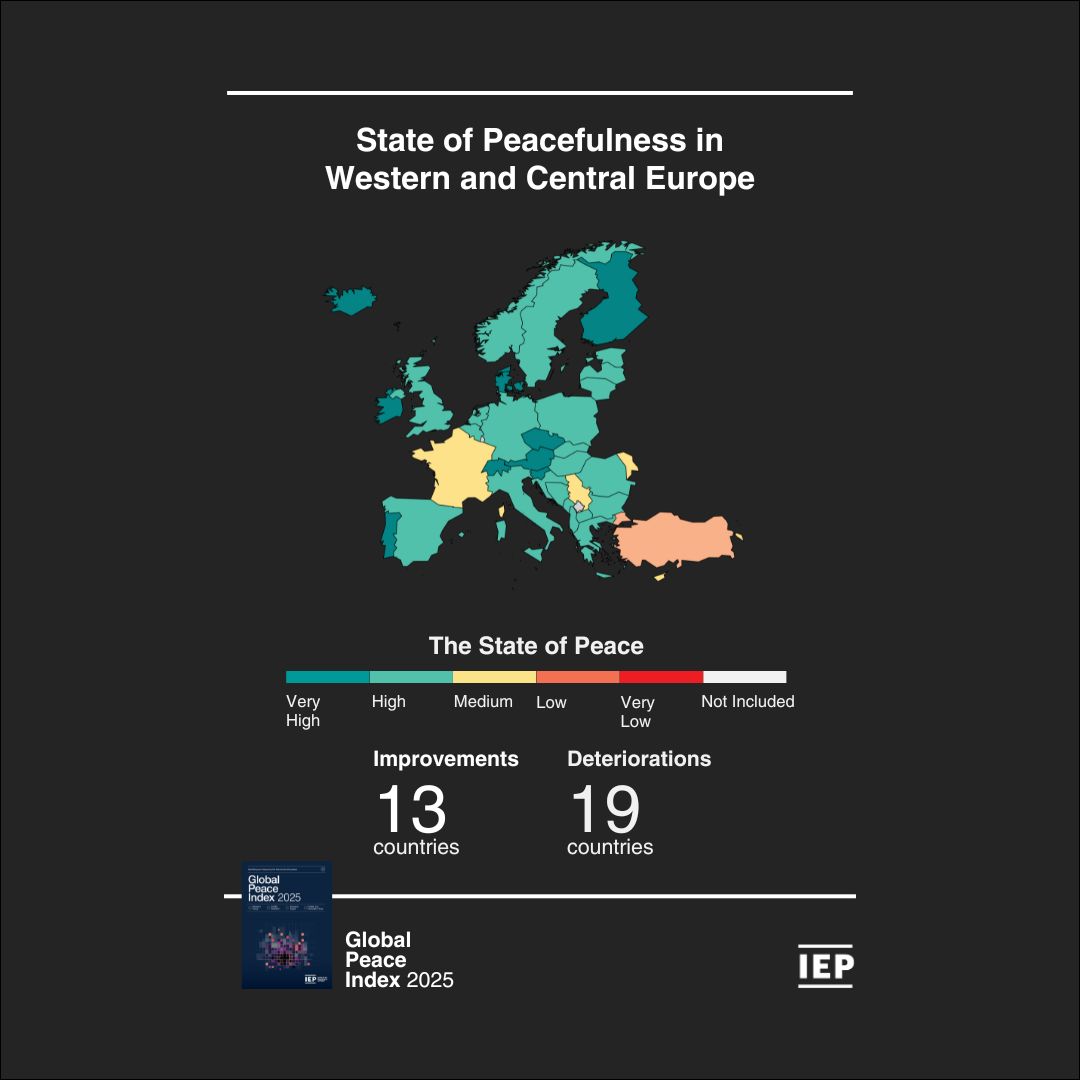
Western and Central Europe is home to seven of the world’s ten most peaceful countries. Iceland has held the top position in the Global Peace Index (GPI) since 2008, and once again leads way in peacefulness in the GPI 2025, in a top 10 dominated by European nations.
It is joined by other European nations Ireland (2nd), Austria (3rd), Switzerland (5th), Portugal (7th), Slovenia (8th), Denmark (9th) and Finland (10th).
Despite dominating the most peaceful nations, the European region faces structural challenges. Europe’s economies are experiencing sustained low growth, reductions in foreign aid, and a broader global retreat from democracy, all of which are eroding their global influence. France and the UK have had the largest falls in international influence.
For the first time, Russia has been ranked the least peaceful country in the world, followed by Ukraine, Sudan, the Democratic Republic of the Congo, and Yemen. This shift underscores the intensification of the war in Ukraine, now entering its third year, and broader instability across the MENA and Sub-Saharan African regions.
Europe’s military expenditure is nearly four times greater than Russia’s, yet its combined military capacity is only one-third higher. The report warns that continued defence spending increases, if not matched with strategic integration and cohesion, risk diverting resources away from social services and exacerbating internal divisions.
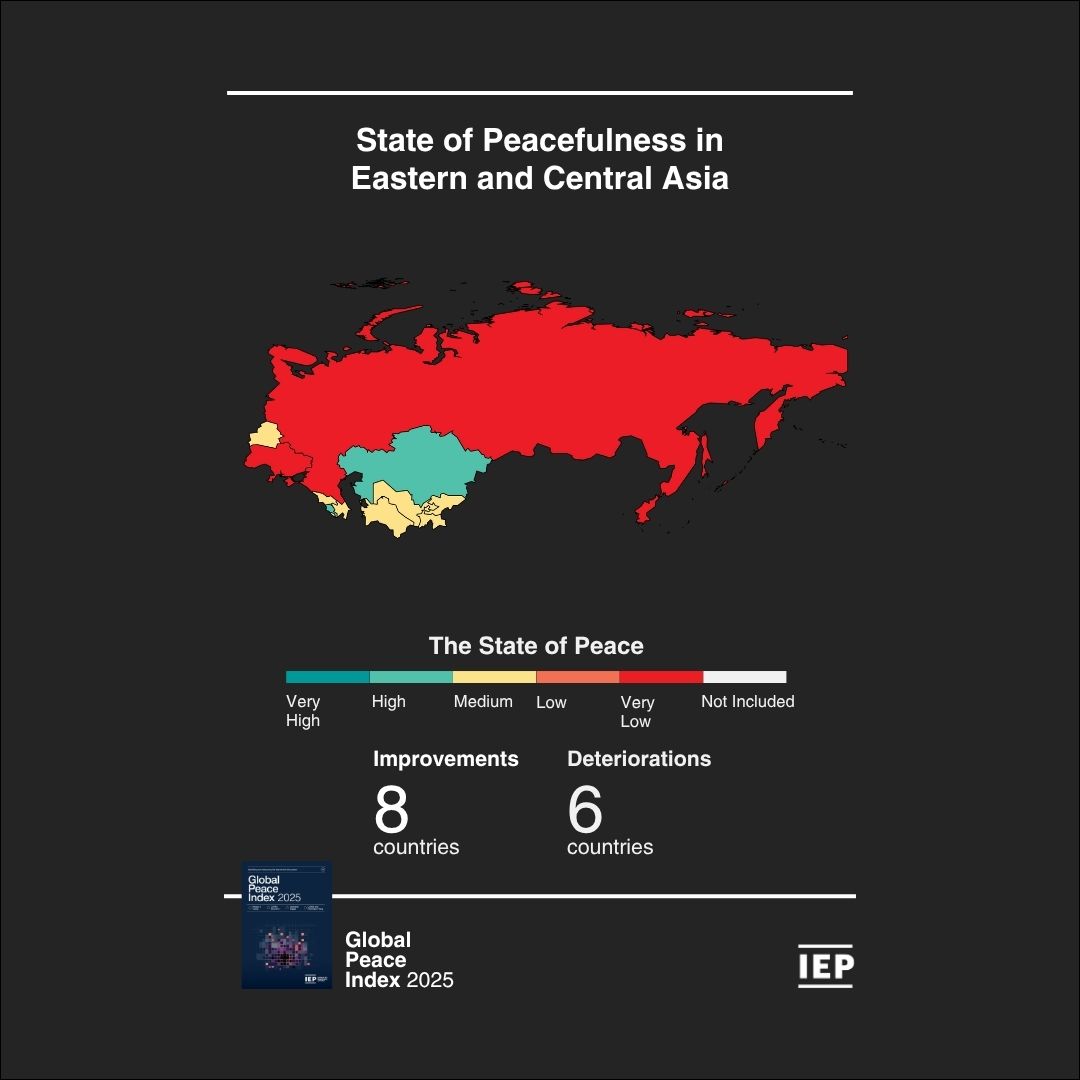
The average level of peacefulness in the Eastern Europe and Central Asia region deteriorating by 0.77 per cent. Overall levels of peacefulness in the region remain low, mainly driven by the conflict between Ukraine and Russia. Eight countries registered improvements, six registered deteriorations, and one remained unchanged.
The dominant issue in the region remains the conflict between Russia and Ukraine, and with no immediate end to the conflict in sight, it is likely that Russia and Ukraine will remain two of the least peaceful countries in the world for the foreseeable future.
In addition to its ongoing conflict with Russia, Ukraine experienced a significant rise in other forms of internal violence, driven in part by stresses and deprivations associated with the war. Domestic violence cases surged in 2024, with over 291,000 incidents reported, a 20 per cent increase from the previous year. Additionally, organised crime activities intensified, including increased arms trafficking and gang-related violence. The proliferation of firearms from the conflict zone contributed to these trends, exacerbating public safety concerns.
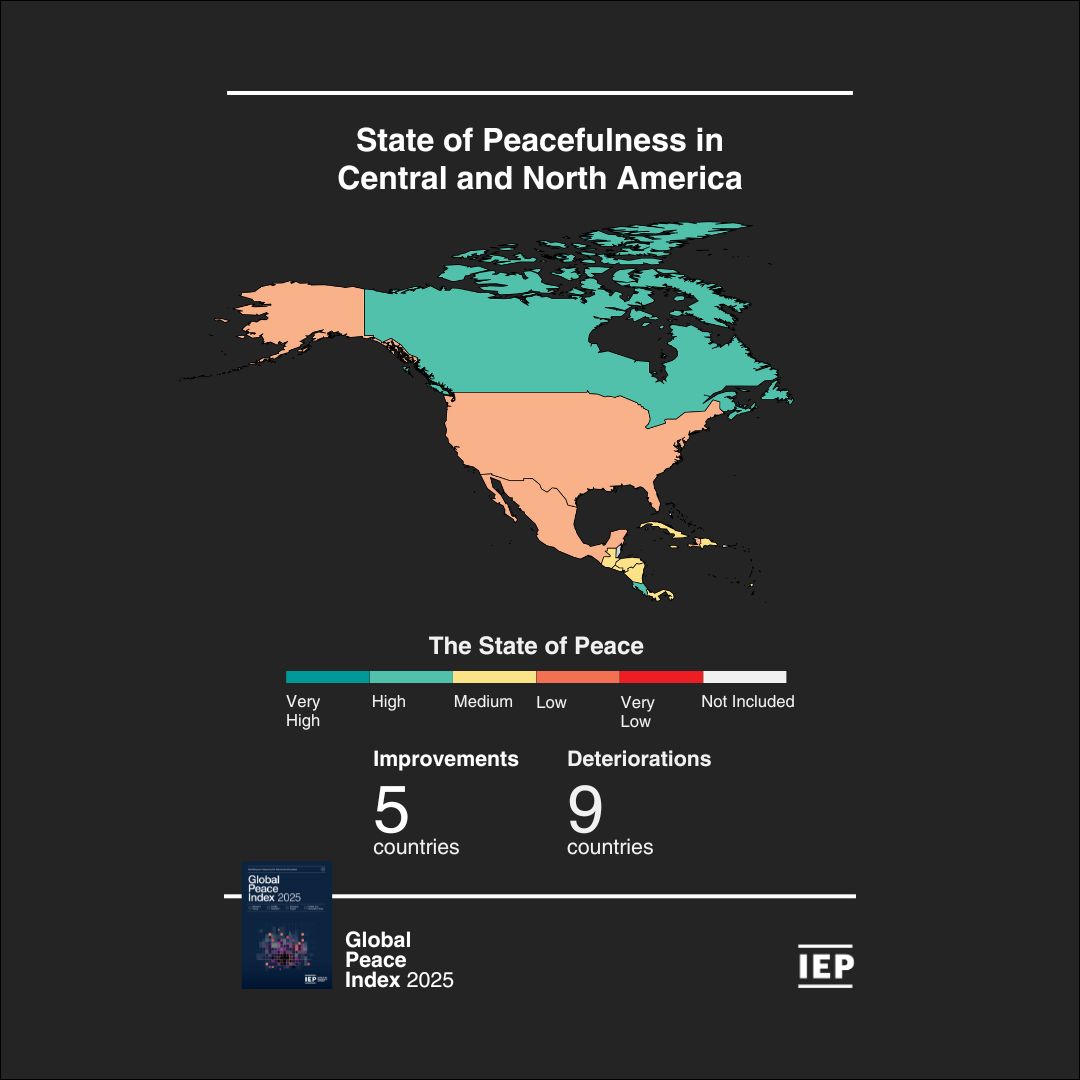
Overall, five countries improved and nine deteriorated in the Central and North America region. There is a large disparity between the most and least peaceful country in the region, as Canada is ranked as the 14th most peaceful country and Haiti is ranked 141st.
While Canada is the most peaceful country in the region, it also recorded the region’s largest deterioration in overall peacefulness over the past year, deteriorating by 5.8 per cent. Political tensions have intensified between Canada and the US under the second Trump Administration, escalated by US imposed trade tariffs.
Violent crime deteriorated over the past year, with notable increases in extortion, robbery and assaults involving weapons or bodily harm. Since 2014, violent crime rates have risen by 43.8 per cent. However, despite these deteriorations, Canada remains one of the more peaceful countries in the world.
While Haiti is the least peaceful country in Central and North America, it recorded the largest improvement in overall peacefulness in the region in the past year.
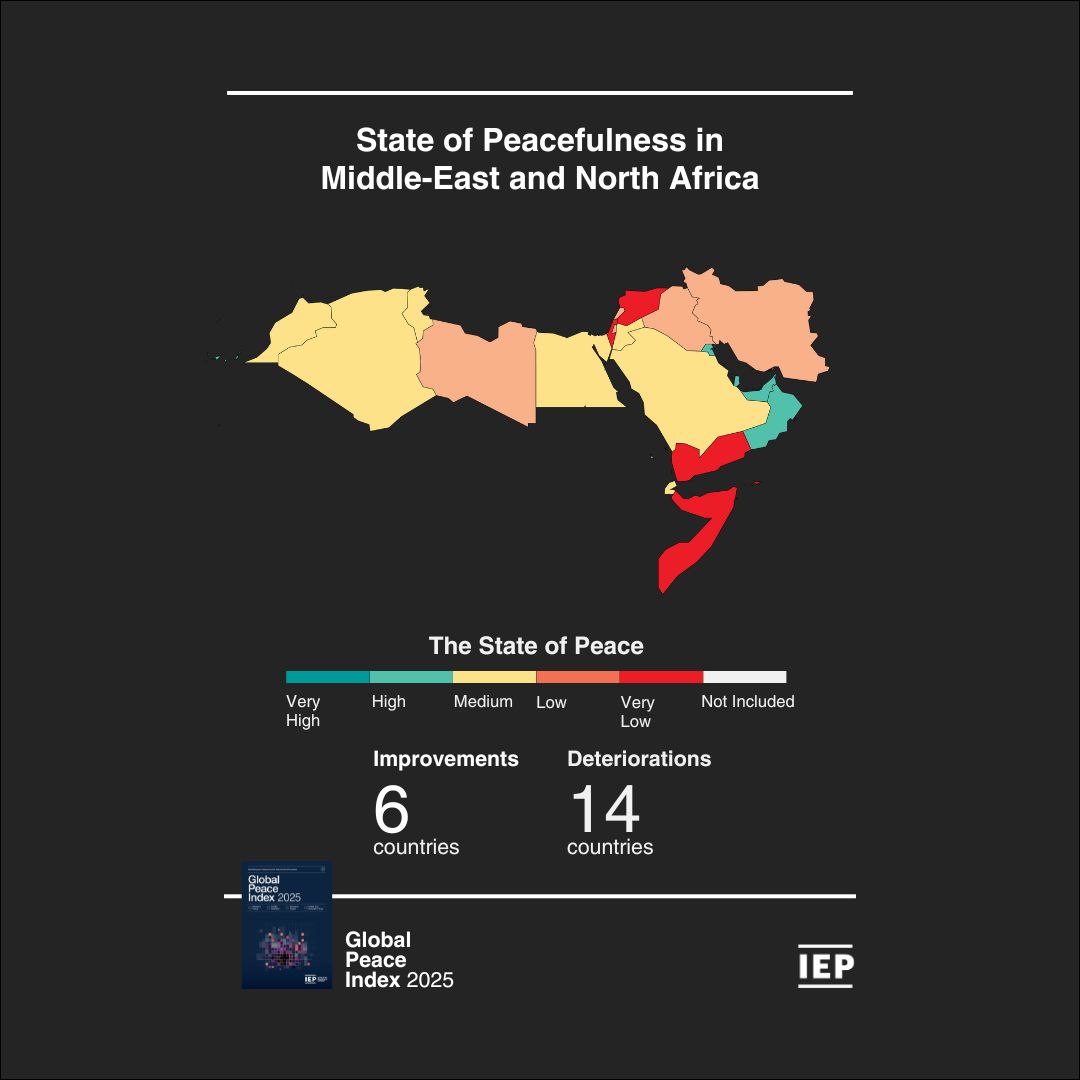
While some countries, such as Saudi Arabia and the UAE, showed improvement in peacefulness, others like Syria, Israel, and Yemen continue to experience high levels of conflict and instability. Israel’s peacefulness declined sharply following the outbreak of war with Hamas, while Syria’s transitional phase post-Assad remains fragile and violent.
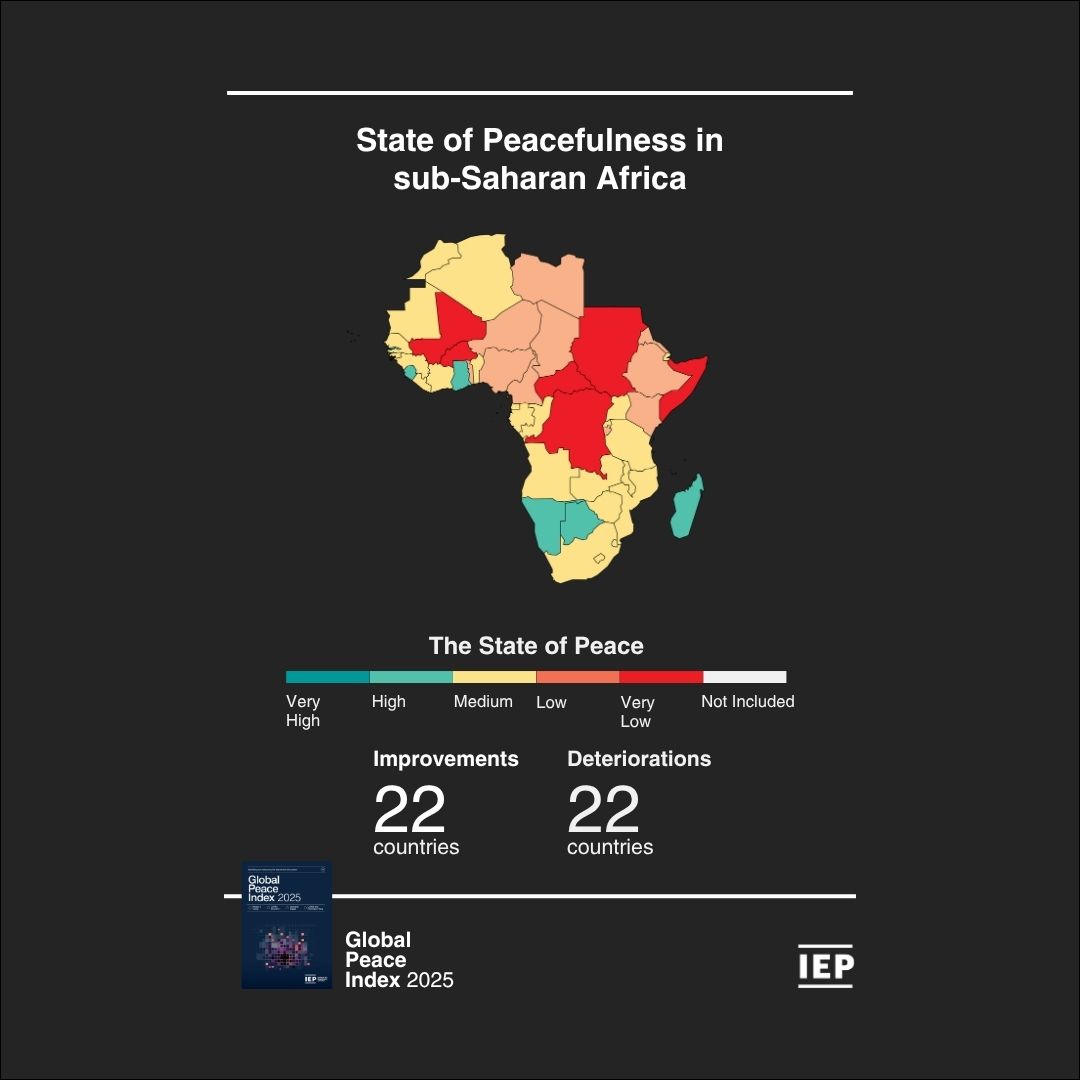
According to the Global Peace Index 2025, 22 countries in Sub-Saharan Africa saw deteriorations in peacefulness, with Sudan, Mali and the DRC among the lowest ranked globally. The Sahel region, in particular, has become a centre for terrorism, with groups such as Jama’at Nasr al-Islam wal Muslimin (JNIM) and Islamic State affiliates expanding their operations.
Worsening economic indicators, such as high debt servicing costs and poor governance, exacerbate regional vulnerabilities.
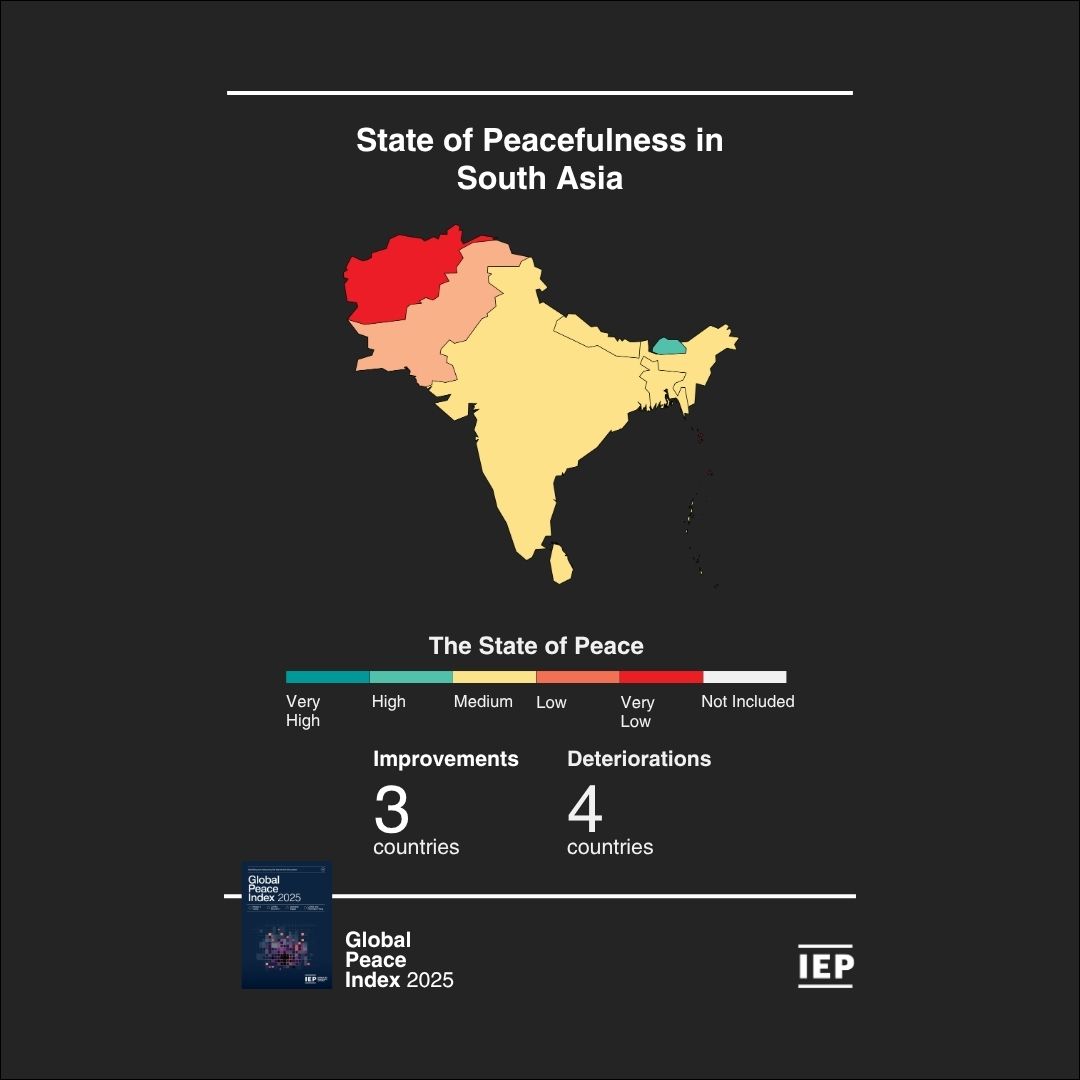
Bangladesh saw increased repression and unrest, while Pakistan’s internal instability and tensions with India remain high. The April 2025 terror attack in Kashmir dramatically increased the risk of open conflict between India and Pakistan, underscoring the fragility of peace in the region. Afghanistan, while slightly improved, remains among the least peaceful countries globally, ranking 160th out of 163.
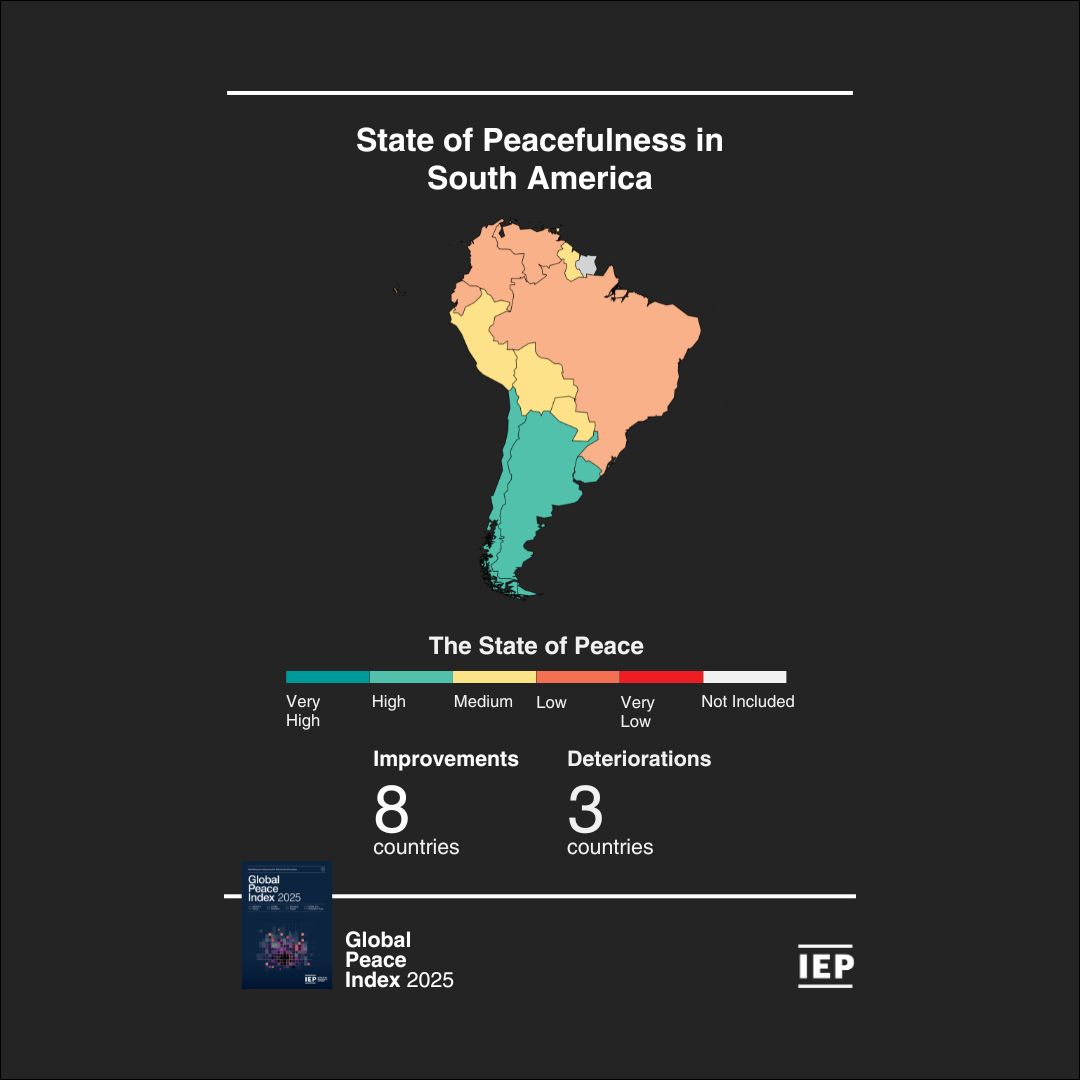
This was largely due to Peru, which saw the largest single-country improvement in peacefulness in 2025, driven by a reduction in civil unrest. Despite economic hardship and political uncertainty, Argentina also showed resilience, becoming the most peaceful country in the region. However, Venezuela and Colombia continue to face elevated risks from political instability and cross-border crime.

Overall peacefulness score for the Asia Pacific region deteriorated by 0.21 per cent. However, it remains the second most peaceful region in the world, a position it has held since 2017.
Overall, 10 out of 19 countries recorded deteriorations, with only nine countries improving. New Zealand is the most peaceful country in the region and is ranked third globally on the 2025 GPI. It recorded an improvement in peacefulness over the past year of 3.1 per cent.
Myanmar is the least peaceful country in the Asia-Pacific region and recorded the region’s worst deterioration in 2025. As a result, North Korea has moved ahead of Myanmar after recording a slight improvement in peacefulness.
Indonesia recorded the largest improvement in overall peacefulness in the region, with peacefulness improving by 2.9 per cent over the past year.
From regional shifts to global insights, explore the findings from the Global Peace Index 2025.
— Download the Global Peace Index 2025 report
— Download the Global Peace Index Press Release
— Request a Media Interview
— View the Global Peace Index Interactive Map